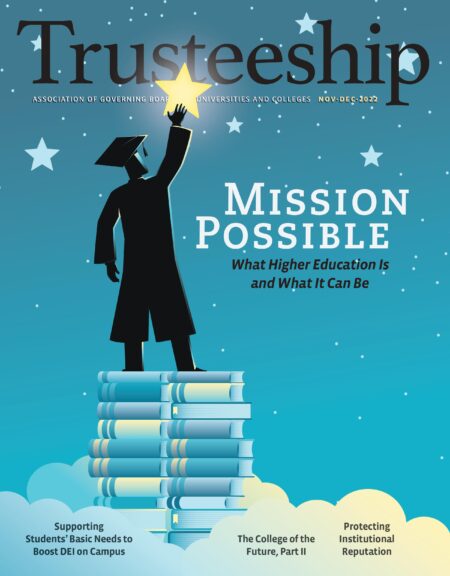
President Biden’s decision to cancel $10,000 in student loan debt ($20,000 for Pell Grant recipients) has intensified the debate around college access, accountability, and affordability, and has sparked countless conversations about potential solutions. The ongoing debate over who should pay for postsecondary education—local, state, or federal governments; students and families; or perhaps even employers—is an important conversation that warrants thoughtful reflection and attention. Board members and senior leaders have a more material question that must be answered: How are we going to survive financially, and thrive, in the years ahead while also supporting the success of all students?
While the reasons driving the cost of tuition and operational expenses vary across campuses, there are common strategic questions regarding the business models of colleges and universities. It is without debate that the expenses driving tuition are closely aligned with high-valued faculty and administrations coupled with essential student support services, mental health counselors, student success coaches, increases in insurance and compliance, state disinvestment, and more. Further, inflation is exacerbating already stressed financial budgets and is a powerful influence on financial sustainability.
Consequential, strategic governing boards understand their institutions’ financial positions, and in collaboration with their chief executives and leadership teams, they ensure that assets are aligned with prioritized outcomes focused on student success for all students. While the purpose of this article is not to explain institutional finance, it is intended to underscore the fact that the current business model for most colleges and universities is not sustainable while elevating student success outcomes. In addition to operational sustainability issues, boards and institutional leaders must address the public’s perception that many colleges are too expensive, not worth the price, and do not prepare students to live prosperous lives. These perceptions are especially concerning for the most vulnerable student populations, and if not addressed, represent a direct threat to institutions’ financial security.
To be clear, the public perception of the (price) value proposition of higher education is not only a “communications” issue, but also a student success issue to ensure colleges and universities prepare their students to live and thrive in the global, digital, knowledge economy. Addressing misinformation about the value of higher education is important, and I encourage boards, in collaboration with your chief executives and leadership teams, to discuss how your institutions are distinct and how your faculty and staff are transforming programs and curricula that may have been developed during a nation-based, analog, and industrial age.
I have two suggestions that boards take to heart as you discuss student success and financial sustainability:
- First: Boards must ensure that their institutions’ education, including credentials, knowledge, experiences, networks, and lifelong benefits, leaves students better positioned to thrive than when they began. Institutions must continue to transform to meet the needs of their students and support them along their journeys, from when they enroll to well after they graduate.
- Second: When considering what your institution can do to survive and succeed financially in the future while also supporting your students, leave no stone unturned. Boards can and should think differently about revenue generation opportunities, shared services, public-private partnerships, staffing, and of course, fundraising. Foundation boards especially must consider how best to align with institutional needs. Board members have diverse expertise and experiences that many administrators do not, and I know their perspectives will be a strategic advantage.
In closing, the good news is that strategic, consequential governing boards are composed of insightful, determined individuals who are passionate about students’ success and the value of higher education. I am confident that higher education has the means and commitment to transform and meet the challenges of our time. Thank you for your partnership along this important journey to support the future of our nations, economies, and societies.
Henry Stoever, AGB President and Chief Executive Officer
RELATED RESOURCES

Trusteeship Magazine Article
A New Way to Gauge Student Success Rates

FAQs
Crisis Leadership

